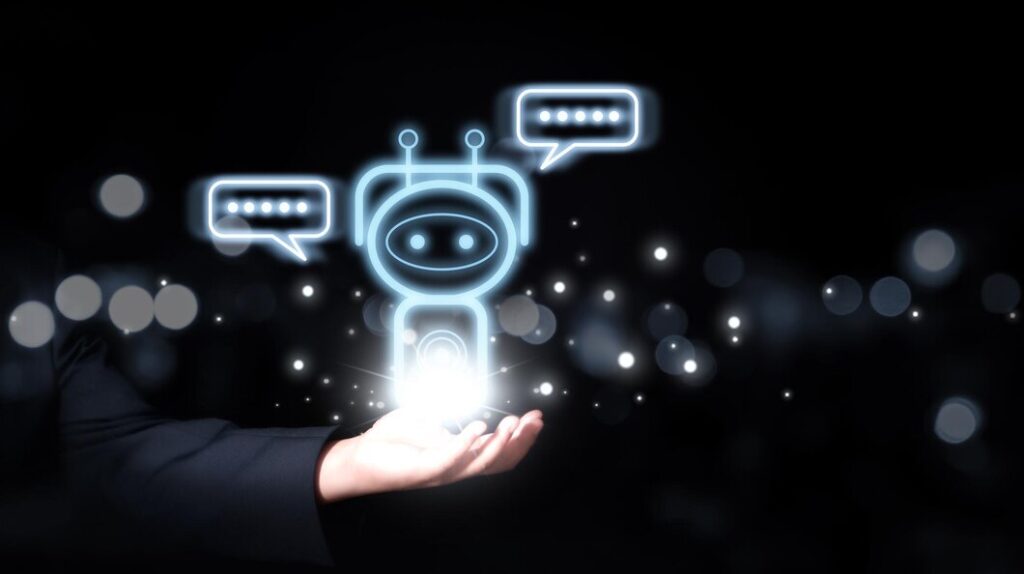Decoding The Duel: Bing Chatbot VS ChatGPT
by Debamalya Mukherjee Technology Published on: 30 January 2024 Last Updated on: 17 July 2024

In the dynamic realm of conversational AI, the choice between Bing Chatbot and ChatGPT sparks a captivating duel. As businesses increasingly harness the power of chatbots, understanding the nuances between these two contenders becomes pivotal.
This article delves into the depths of Bing AI chatbot vs ChatGPT, unraveling their unique features, applications, and limitations. Navigating the intricacies of natural language processing, integration capabilities, and real-world performance, our exploration aims to empower decision-makers in selecting the optimal solution for their specific needs.
Join us on this journey as we decipher the distinctive strengths and potential challenges that define the landscape of these advanced conversational agents, shedding light on the evolving tapestry of conversational artificial intelligence.
Understanding Bing Chatbot

Bing Chatbot, a product of Microsoft’s innovative AI endeavors, stands at the forefront of conversational agents. Built on a foundation of advanced natural language processing (NLP), it boasts a multifaceted approach to understanding user queries. The initial exploration will unravel the intricacies of Bing Chatbot’s architecture, shedding light on how it interprets and responds to user input.
Key Features and Capabilities
Diving deeper, we will dissect the pivotal features that define Bing Chatbot. From its robust NLP capabilities to seamless integration with Microsoft services, this section will highlight the chatbot’s strengths. Understanding its adaptability across various industries and its role in enhancing user interactions will provide a comprehensive view of its capabilities.
Limitations and Challenges
However, no technology is without its challenges. In this segment, we will navigate through the potential limitations of Bing Chatbot. From addressing data privacy concerns to exploring customization constraints, we aim to present a balanced perspective on where this conversational agent might encounter hurdles. This nuanced understanding is crucial for decision-makers looking to implement an effective chatbot solution.
Unveiling ChatGPT
In the expansive landscape of conversational AI, ChatGPT emerges as a paradigm-shifting entity. Powered by the formidable GPT-3.5 architecture, this section unveils the intricacies that define ChatGPT’s prowess in language understanding and generation. As we embark on this exploration, an introduction to the underlying technology sets the stage for comprehending the vast capabilities of ChatGPT.
GPT-3.5 Architecture Overview
Delving into the core of ChatGPT, we dissect the GPT-3.5 architecture to understand how it processes and generates human-like text. This subheading provides insights into the layers of neural networks that enable ChatGPT’s open-ended conversational abilities. The focus here is on the technology that empowers ChatGPT to adapt seamlessly to diverse domains and respond dynamically to user inputs.
Flexibility and Adaptability in Various Domains
ChatGPT is not confined to a singular role; it thrives on versatility. This segment explores the ways in which ChatGPT excels in open-ended conversations, comprehends intricate language nuances, and adapts to specific domains. From creative writing assistance to aiding in code generation, ChatGPT’s flexibility positions it as a valuable tool across a spectrum of applications, marking a significant departure from traditional chatbot limitations.
Comparative Analysis

Feature-by-Feature Comparison
In this section, we embark on a meticulous examination of Bing Chatbot and ChatGPT, dissecting their features to facilitate a nuanced comparison. From natural language understanding to response customization and integrate ChatGPT into app capabilities, each aspect is scrutinized to provide a comprehensive overview. This subheading serves as the foundation for decision-makers to discern the specific strengths and weaknesses of each conversational agent.
Performance in Real-World Scenarios
Moving beyond theoretical capabilities, this segment assesses the practical performance of Bing Chatbot and ChatGPT in real-world scenarios. The focus is on their efficacy in diverse applications, including customer support, content creation, and task automation. By delving into the outcomes achieved in tangible use cases, this analysis aims to guide users in aligning the chatbot functionalities with their unique business requirements.
The comparative analysis section serves as a crucial juncture for decision-makers, offering a side-by-side evaluation of Bing Chatbot and ChatGPT’s capabilities and practical applicability in real-world settings.
Use Cases and Applications
Industries Benefiting from Bing Chatbot
This section illuminates the industries where Bing Chatbot has carved its niche. From e-commerce and healthcare to education, we explore how Bing Chatbot enhances user experiences and streamlines operations. Understanding its domain-specific applications provides valuable insights for businesses seeking a tailored conversational solution.
Domains Where ChatGPT Excels
Conversely, ChatGPT shines in diverse domains, and this subheading delineates its exceptional capabilities. Whether assisting in creative writing endeavors or generating code dynamically, ChatGPT’s versatility unfolds. By exploring its proficiency in distinct areas, businesses can identify scenarios where ChatGPT aligns seamlessly with their objectives.
The use cases and applications section elucidates the practical implications of deploying Bing Chatbot and ChatGPT, offering a strategic perspective for businesses seeking to optimize their conversational AI solutions.
Conclusion
As we draw the curtain on the exploration of Bing Chatbot and ChatGPT, the landscape of conversational AI becomes clearer, yet more fascinating. Each contender brings unique strengths to the table, with Bing Chatbot excelling in specific industries and ChatGPT demonstrating unparalleled adaptability.
The decision between them hinges on nuanced considerations, from natural language understanding to real-world performance. In this evolving realm, no one-size-fits-all solution exists.
As technology advances, the choice between Bing Chatbot and ChatGPT reflects a strategic decision tailored to specific business needs. The conversation continues, and as these chatbots evolve, so too will the possibilities they unlock for businesses navigating the dynamic intersection of artificial intelligence and human interaction.
FAQ
How does Bing Chatbot handle complex queries?
Bing Chatbot employs advanced Natural Language Processing (NLP) capabilities to understand and respond to complex queries. Its ability to analyze the context, identify key elements, and generate coherent responses enables it to handle a wide range of intricate user inputs effectively.
Can ChatGPT be customized for industry-specific jargon?
Yes, ChatGPT can be customized for industry-specific jargon. Its flexibility lies in fine-tuning responses based on training data. By providing relevant examples and context during training, ChatGPT can adapt to and understand the nuances of industry-specific language, making it a versatile solution for diverse domains.
What security measures are in place for both chatbots?
Both Bing Chatbot and ChatGPT prioritize user data security. They implement encryption protocols to safeguard sensitive information during interactions. Additionally, they adhere to industry-standard security practices, ensuring data integrity, confidentiality, and protection against potential threats.
How do Bing Chatbot and ChatGPT adapt to user feedback?
Bing Chatbot and ChatGPT employ iterative learning mechanisms based on user feedback. They analyze interactions, identify patterns, and continuously update their models to enhance performance. User feedback serves as a valuable source for refining responses, improving language understanding, and addressing potential limitations.
Which chatbot is more suitable for small businesses?
The suitability depends on the specific needs of the small business. Bing Chatbot may be preferable for industries where Microsoft integrations are crucial, offering seamless compatibility. On the other hand, ChatGPT excels in versatility, making it suitable for small businesses seeking adaptability across various applications, such as content creation, customer support, and more. The choice hinges on the unique requirements and priorities of the business.
Read Also:







































































































